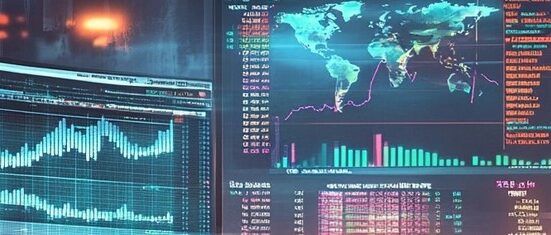Understanding Forex Market Trading Hours

The foreign exchange market, or Forex, is the largest and most liquid financial market in the world. Unlike stock markets, which have set trading hours, the Forex market operates 24 hours a day, five days a week, enabling traders to capitalize on global opportunities. Understanding the Forex market trading hours is crucial for any trader looking to optimize their strategy and enhance profitability. This article delves into the key trading sessions across different regions and provides insights into how traders can make the most of these periods.
Key Trading Sessions Around the Globe

The Forex market is decentralized, meaning it has no single headquarters or centralized exchange. Instead, it consists of a network of financial institutions, brokers, and individual traders. This structure necessitates a round-the-clock operation divided into three primary trading sessions:
- Asia-Pacific Session
- European Session
- North American Session
Each of these sessions corresponds to specific global financial hubs and has unique characteristics regarding liquidity, volatility, and trading opportunities.
Asia-Pacific Session: Opening the Market

The Asia-Pacific session, often referred to as the Tokyo session, kicks off the Forex trading day. This session operates from 11 PM to 8 AM GMT, with Tokyo and Sydney serving as its major financial centers.
Characteristics:
- Generally low volatility compared to other sessions.
- Currency pairs involving the Japanese yen, Australian dollar, and New Zealand dollar experience more activity.
- Less market noise, providing opportunities for those who prefer technical analysis.
Practical Tips:
- Focus on currency pairs such as AUD/USD, NZD/USD, and USD/JPY.
- Employ range-bound strategies due to the typically narrow price ranges.
- Monitor economic news from Australia, Japan, and New Zealand for potential impacts.
European Session: A Center of Activity

Following the Asia-Pacific session, the European session takes over. This session, dominated by the London market, runs from 7 AM to 4 PM GMT. It is considered the most active session due to the sheer volume of transactions.
Characteristics:
- High liquidity and volatility, particularly in the morning hours.
- Major news releases from the Eurozone can significantly impact market movements.
- EUR/USD, GBP/USD, and EUR/GBP are among the most traded currency pairs.
Practical Tips:
- Utilize breakout strategies to take advantage of increased volatility.
- Keep an eye on economic indicators from the Eurozone, the UK, and Switzerland.
- Be prepared for sudden market swings due to geopolitical developments.
North American Session: High Volatility

The North American session, also known as the New York session, coincides with the closure of the European markets. This overlap results in high volatility and trading volume, running from 12 PM to 9 PM GMT.
Characteristics:
- Significant influence of U.S. economic data releases, such as Non-Farm Payrolls and Federal Reserve announcements.
- Commodities trading, especially oil and gold, can impact related currency pairs like USD/CAD and AUD/USD.
- Active trading of USD pairs due to the global reserve currency status.
Practical Tips:
- Prioritize trading USD pairs, as they are highly liquid and volatile.
- Be mindful of U.S. economic calendar events that can cause rapid price movements.
- Consider employing trend-following strategies during this session.
Overlapping Sessions: Maximizing Opportunities

One of the most advantageous times to trade is during overlapping sessions, where two trading centers are open simultaneously. These overlaps occur between:
- The Asian and the European session from 7 AM to 8 AM GMT.
- The European and the North American session from 12 PM to 4 PM GMT.
Benefits of Overlapping Sessions:
- Increased volatility and liquidity, providing more significant trading opportunities.
- Narrower spreads due to higher trading volumes.
- Ideal for short-term trading strategies aiming for quick profits.
Practical Tips:
- Focus on major currency pairs like EUR/USD and GBP/USD, as they offer tighter spreads and more liquidity.
- Use economic news releases during these periods to capitalize on market momentum.
- Implement risk management strategies to mitigate potential losses from sudden market shifts.
Comparative Table: Trading Sessions Overview
| Trading Session | Operating Hours (GMT) | Key Characteristics | Major Currency Pairs |
|---|---|---|---|
| Asia-Pacific Session | 11 PM – 8 AM | Low volatility, focus on JPY, AUD, NZD | AUD/USD, NZD/USD, USD/JPY |
| European Session | 7 AM – 4 PM | High liquidity, significant news impact | EUR/USD, GBP/USD, EUR/GBP |
| North American Session | 12 PM – 9 PM | High volatility, USD-dominated trading | USD/CAD, USD/JPY, EUR/USD |
| Overlapping Sessions | 7 AM – 8 AM, 12 PM – 4 PM | Increased volatility and liquidity | EUR/USD, GBP/USD |
Understanding and leveraging Forex market trading hours is critical for any trader aiming for success. By aligning trading strategies with session characteristics and capitalizing on overlapping periods, traders can optimize their chances of achieving profitable outcomes in the dynamic Forex landscape.









Leave feedback about this